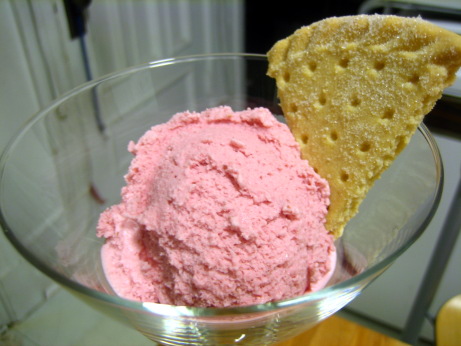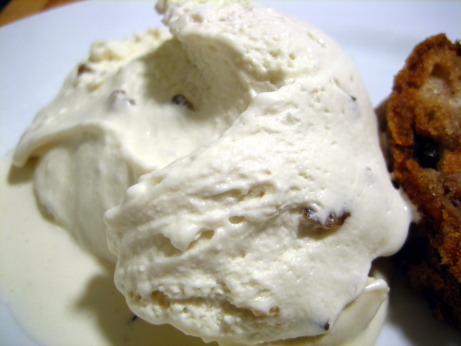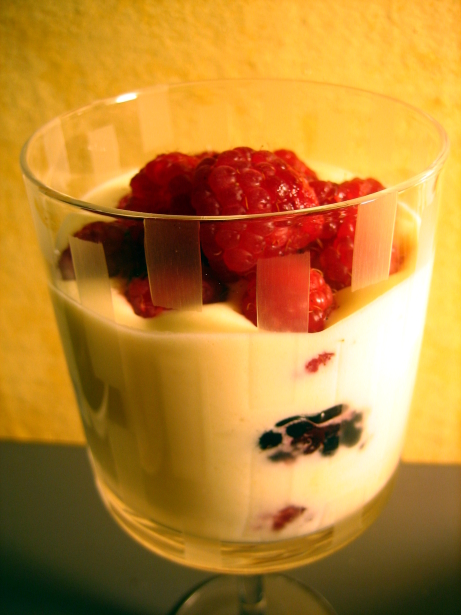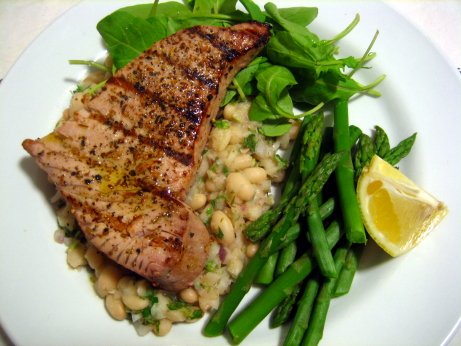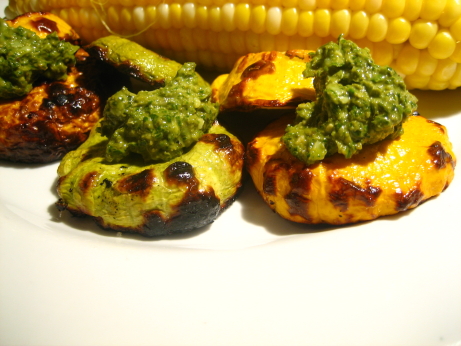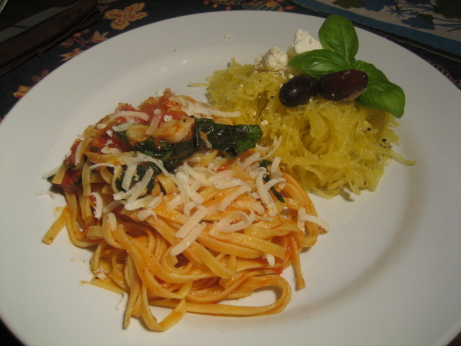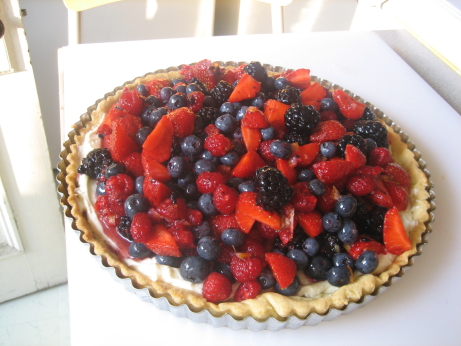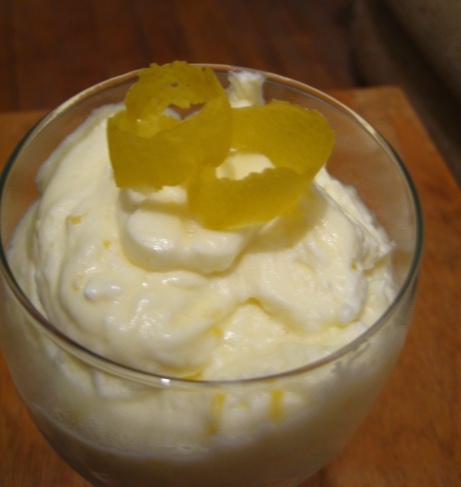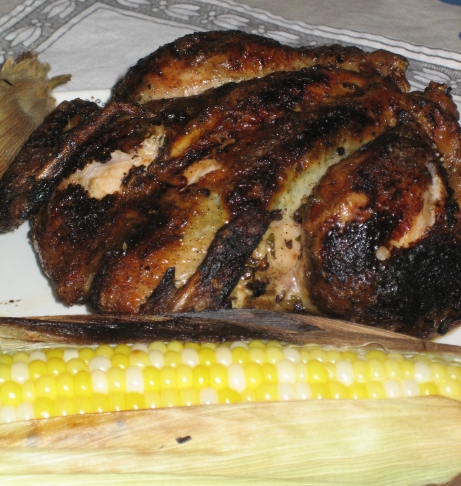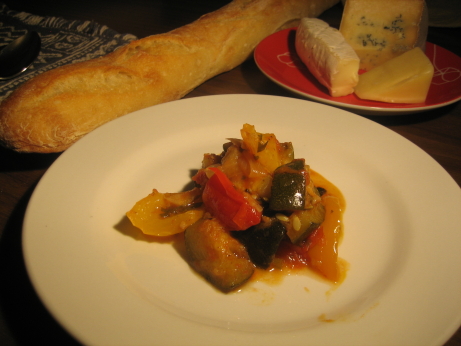
The recipe
Everyone, or at least everyone who cares about food, has a stockpile of formative food memories, often centred on parents and grandparents doing things the way they’d always been done, or traveling experiences where the zeitgeist of your food universe is overturned by a brand new culture. The list of culinary luminaries who trace their food awakenings back to a summer trip to France is longer than I’d care to count. So it should come as no surprise that my thirteen year old self came home from a month long stay with a family near Lyons with a different perspective on food, and in particular ratatouille.
I don’t think I took nearly as much advantage of my time there as I should have, I mostly sulked, pittied myself, and felt homesick. I was an awful house guest, and I was convinced I was being punished. But, my hosts graciously put up with this insufferable Canadian brat, and exposed me to some wonderful things that I wasn’t ready to appreciate. Fifteen years later I can still taste most of the meals we ate, and the idea of staying in a four hundred year old farm house, surrounded by rolling pastures, creaky old barns, and tiny streams sounds wonderful. I wish I could go back and gather snails off the rocks in the field after a rain for escargot in garlic butter, and the weekly farmers market wouldn’t seem like the painful drudgery it did at the time. I owe that family a huge debt of gratitude, and an apology.
I did appreciate most of the food experiences at the time, the rich creamy yogurt was unlike anything I’d ever eaten, the impeccably cured sausages were a revelation, and of course the cheese. I also started to come around on very rare steak. The biggest change was the idea that vegetables could good enough to crave, and not just an afterthought to be gotten out of if at all possible. Ratatouille was the catalyst for that change. A nice older couple who had helped to organize my trip invited us over for lunch in the back garden, where we ate ratatouille, baguette, and nibbled on olives. At first I was puzzled by the lack of a meaty main course, but soon I couldn’t have cared less. The ratatouille was unbelievably good, and I just couldn’t understand why. My mother had made it before, and I was way to smart to fall for her hiding veggies in a stew trickery, so I turned my nose up at it. But this ratatouille was a completely different being, it was insanely flavourful, and multi layered with each element distinct, but contributing to the whole. There were tomatoes, garlic, peppers, onions, zucchini, eggplant, that were more fresh and explosively flavourful than I could ever have conceived of them being. That meal filled me with a sense of profound contentment, connectedness, and peace. Thinking back that euphoria probably had a lot more to do with the Champagne and Beaujolais they let me drink, but one way or another my perspective on ratatouille had been changed. I asked the old man what the secret was, and he told me about herbs de provence, so I brought a big bag home to try to get my mother to recreate it. Of course, my mother had herbs de provence, the secret was really in the incredible produce that went into the stew, and a lifetime spent honing the technique ’till his ratatouille was as good as it could be.
The Book’s ratatouille doesn’t live up to the old man’s, but it at least recalls it. The Book uses a very odd method, the recipe starts by making the tomato sauce with peeled (I didn’t bother) seeded and chopped tomatoes, sliced garlic, parsley, and basil leaves. While the sauce simmers, onions, bell peppers, zucchini, and eggplant are individually browned, then added to the tomato sauce and allowed to simmer for an hour. This batch browning of the veggies does a nice job building flavour, but it’s a huge pain, and it takes a whole whack of oil. I liked the added complexity, but there really was much more oil than necessary. I think you could get a similar effect by tossing the veggies with a more reasonable amount of oil and spreading them on cookie sheets and running them under the broiler for a few minutes. I was also surprised by the lack of herbs de provence, usually that herb blend is de rigueur for ratatouille. The basil only strategy turned out to be quite delicious, but I did miss the other flavours. My favorite ratatouilles have quite distinct chunks of vegetables, which retain some of their original texture, while softening into a cohesive blend with the others. Here, everything got a bit too soft, and I wonder if it wouldn’t have worked better to simmer it for less time, but let it sit in the fridge for a day or two before serving it.
I made this ratatouille twice within a few weeks. I was very well pleased with my first attempt, and decided to bring a second batch to a large family affair. The second attempt just didn’t live up to the first one, and I can’t explain why. The first batch went over pretty well with my dining companion, and some friends I served it to, but the second was largely ignored at dinner. That inconsistency is kind of worrying to me, I have no clue what factors I varied in my second attempt, but it just didn’t have that special something. My first try was very good, and could have been excellent with a few tweaks, however the inexplicably mediocre second attempt will keep me from giving this a great rating.
